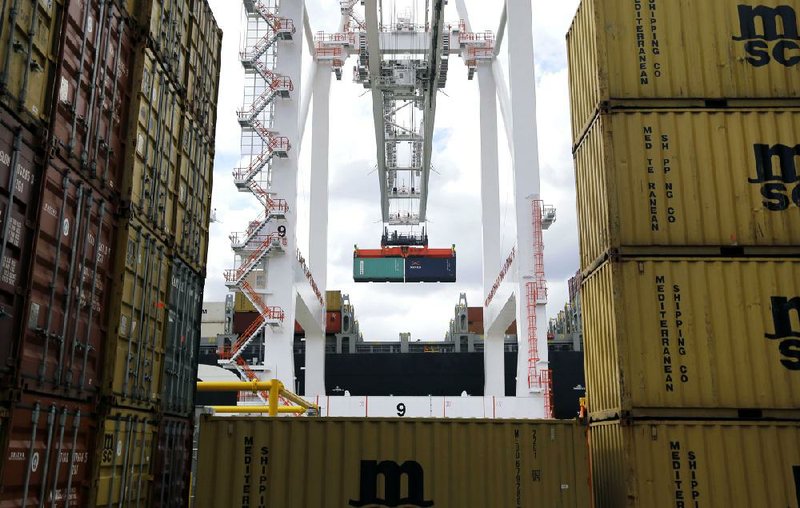WASHINGTON - The trade deficit in the U.S. shrank more than forecast in November as oil imports dropped to the lowest level in three years and exports climbed to a record.
The gap narrowed 12.9 percent to $34.3 billion, more than projected by any economist surveyed by Bloomberg and is the smallest since October 2009, figures from the Commerce Department showed Tuesday. Sales of aircraft and chemicals raised November’s export numbers.
Improving economies in Europe and Asia benefit companies like Boeing Co., leading to a pickup in manufacturing that is good for U.S. economic growth. The fuel-driven drop in imports overshadowed record purchases of foreign autos, parts and capital goods that indicate spending by American consumers and businesses is strengthening.
“Part of the improvement has been due to the emergence of the eurozone from recession,” said Ryan Wang, an economist at HSBC Securities USA Inc. in New York. “Also, there appears to have been a pickup in demand from Asia at the end of the year. Hopefully, that can continue.”
The median forecast in a Bloomberg survey of 68 economists projected the deficit would be $40 billion. Estimates ranged from $38 billion to $42.8 billion. The Commerce Department revised the October gap down to $39.3 billion from an initially reported $40.6 billion.
Exports increased 0.9 percent to about $194.9 billion, reflecting a $390 million gain in civilian aircraft and a $264 million advance in chemical sales.
Imports dropped 1.4 percent to about $229.1 billion in November. Purchases of crude oil plunged to $28.5billion, the lowest since November 2010, reflecting both lower prices and volume. The gains in American demand for capital goods were paced by computers and accessories.
The petroleum deficit shrank to $15.2 billion in November, the lowest since May 2009. Excluding oil and adjusting for inflation, the trade deficit was little changed at $41.1 billion in November compared with $41.4 billion the previous month.
“We’ll see imports increase, in particularly nonenergy imports, as we see expanding consumer spending in the U.S.,” Gus Faucher, senior economist at PNC Financial Services Group Inc. in Pittsburgh, said before the report was released.
A pickup at U.S. factories is helping to support economic expansion. Manufacturing grew in December at the second-fastest pace in more than two years. The Institute for Supply Management’s factory index eased to 57 from the previous month’s 57.3, which was the highest since April 2011, the Tempe, Ariz.-based group said last week.
Orders reported by purchasing managers were the strongest since April 2010, and an employment gauge reached its highest level since June 2011, Institute for Supply Management data show.
Dennis Muilenburg, president and chief operating officer of Chicago-based Boeing, is among executives who are optimistic about business abroad. About 30 percent of the plane maker’s revenue comes from outside the U.S., which Muilenburg predicted will be a stable share “for the long term.”
“It’s not just a wave of exports; it’s something we can sustain for the long run,” Muilenburg said. “Even in a tough budget environment, we’re only seeing increases here in terms of security needs.”
Manufacturing around the world showed signs of uneven growth in December, according to other reports. In the eurozone, an index of factory activity climbed to 52.7 from a November reading of 51.6, Markit Economics said. Manufacturing in Germany increased, but a gauge of factories in France dropped to a seven-month low. An index of British manufacturing cooled as export demand weakened, and readings in China slipped.
The trade gap with China, the world’s second-biggest economy, narrowed to $26.9 billion from $28.9 billion in October, Tuesday’s report showed. Exports to China were the highest on record.
Information for this article was contributed by Ainhoa Goyeneche of Bloomberg News.
Business, Pages 25 on 01/08/2014
